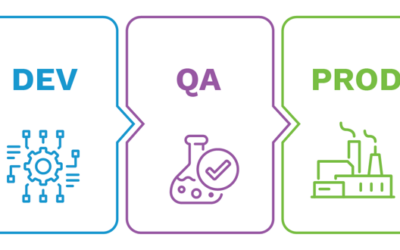Six Steps for Choosing the Right Business Process Software Tools
When new technology tools are needed to fix a broken business process, follow these six key steps to help make the right choices.
You’ve identified a broken business process. Now—do you need to invest in new technology to fix it? Or just to re engineer the existing task flow? Or both?
That line of inquiry is fundamental to the recommendations presented in the white paper Process and Tool, Chicken and Egg: Finding the Right Tools for Your Organization, in which author Roy Atkinson of HDI outlines six key steps for selecting new technology tools.
 If new technology is needed, the six key selection steps specified in the white paper are:
If new technology is needed, the six key selection steps specified in the white paper are:
1. Get the right people involved.
The first step is among the most crucial. Staff members at different levels and from different departments each bring unique perspectives to the table. One key function of the group will be to produce financial justification. As Atkinson points out, “Business leaders will want to know the value that any change will provide, especially when it will require a substantial investment of money, resources, and time.”
The process used to calculate the cost savings and ROI from automated self-service can serve as a useful template for calculating the value of a process change or technology purchase.
Involving the “right people” extends to finding the right management sponsor. Atkinson notes, “When looking for management sponsorship, be sure to consider the amount of change your initiative will require. As the saying goes, ‘Culture eats strategy for lunch.’ Entrenched behaviors can erect barriers at every level. You’ll need someone to help overcome this resistance.”
One way to address the resistance issue when implementing a significant operational change, such as implementing an enterprise request management (ERM) strategy, is to proceed in small, incremental steps. Focus on achieving a series of “small wins” that prove the value to all stakeholders and minimize the fear of change.
2. Ask the right questions before you start.
Among the most important questions to ask, according to Atkinson, are: what problem are we trying to solve? And why do we need new software tools?
He continues, “If the answer is ‘our tool doesn’t do what we need it to do,’ then you need to lay out the unmet needs carefully and completely so that you don’t make a mistake when you buy new technology.”
It’s also vital to clarify whether you really need to do a major “rip and replace” type implementation, or if needs can be met with a simpler tool that leverages and extends the value of your existing enterprise software investments.
3. Define your processes before searching for tools.
Before even beginning a search for suitable software, it’s vital to have your team of “the right people” define what an “un-broken” process would look like. The best approach here is to heed the advice of Stephen Covey to “start with the end in mind.”
The desired end result of any type of service delivery process, for example, should be to have a delighted customer. The redesign should therefore proceed from that perspective: how would this process work in a way that is ideal from the standpoint of the end user; how can we make it better, faster and cheaper for both the (external or internal) customer as well as the organization?
Atkinson advises asking not only about end goals but also about the gaps between the current process and the desired one. “This gap analysis can point out where you can best leverage technology, and where you can make changes to current processes and procedures to achieve your goals.”
4. Find the hidden expenses.
Hidden expenses include gaps in skills that will need to be met with training; the need for outside talent, such as business or technical consulting; and the costs of software customization.
The last item above can be addressed by seeking out software that is configurable rather than customizable (configuration changes are generally more like to survive version upgrades than are code customizations), or by looking for tools that can be customized at the user interface level (systems of engagement) rather than requiring code changes to underlying enterprise applications (systems of record).
5. Decide whether or not to customize.
Should we customize our processes to fit the software, or customize the software to fit our processes? It’s hard to admit your baby is ugly, but the fact is that most enterprise software is designed to support industry “best practices.” If your processes are less efficient than those of the leaders in your industry, then your processes need to be adapted to at least that level. But your baby may not be ugly: if your process is actually more efficient that what the software would dictate, customizing the software is definitely in order.
Bear in mind there will be costs either way. As Atkinson puts it, “Customization can be very expensive, but large organizational changes are themselves not inexpensive.”
6. Have a plan for measuring success.
Again, before implementing any new technology, methods for measuring the results of the change need to be identified. Ideally, the software itself will provide analytics that help quantify results.
For operational purposes, you’ll want to track metrics such as time saved, manual steps eliminated, support calls reduced, and user satisfaction increased. Upper management, however, will need to see these improvements translated into dollar terms. The labor cost savings in eliminating a call to support should be easy to track, but it may take more creativity to quantify the savings from greater user satisfaction. Does it help to retain customers who may otherwise have been lost? Increase revenue opportunities? Prevent people from getting frustrated and “going around” the system, saving those attendant costs?
Overall, as Atkinson notes, these steps aren’t designed to help choose from among competing software applications, but rather to provide a solid foundation for improving business processes and determining what types of technology tools, if any, are need to support that improvement.
For more on this topic, check out the white papers Enterprise Request Management: An Overview and Agility is the Key to Request Management Software.
To follow and contribute to the discussion, join the Enterprise Request Management Group on LinkedIn.



